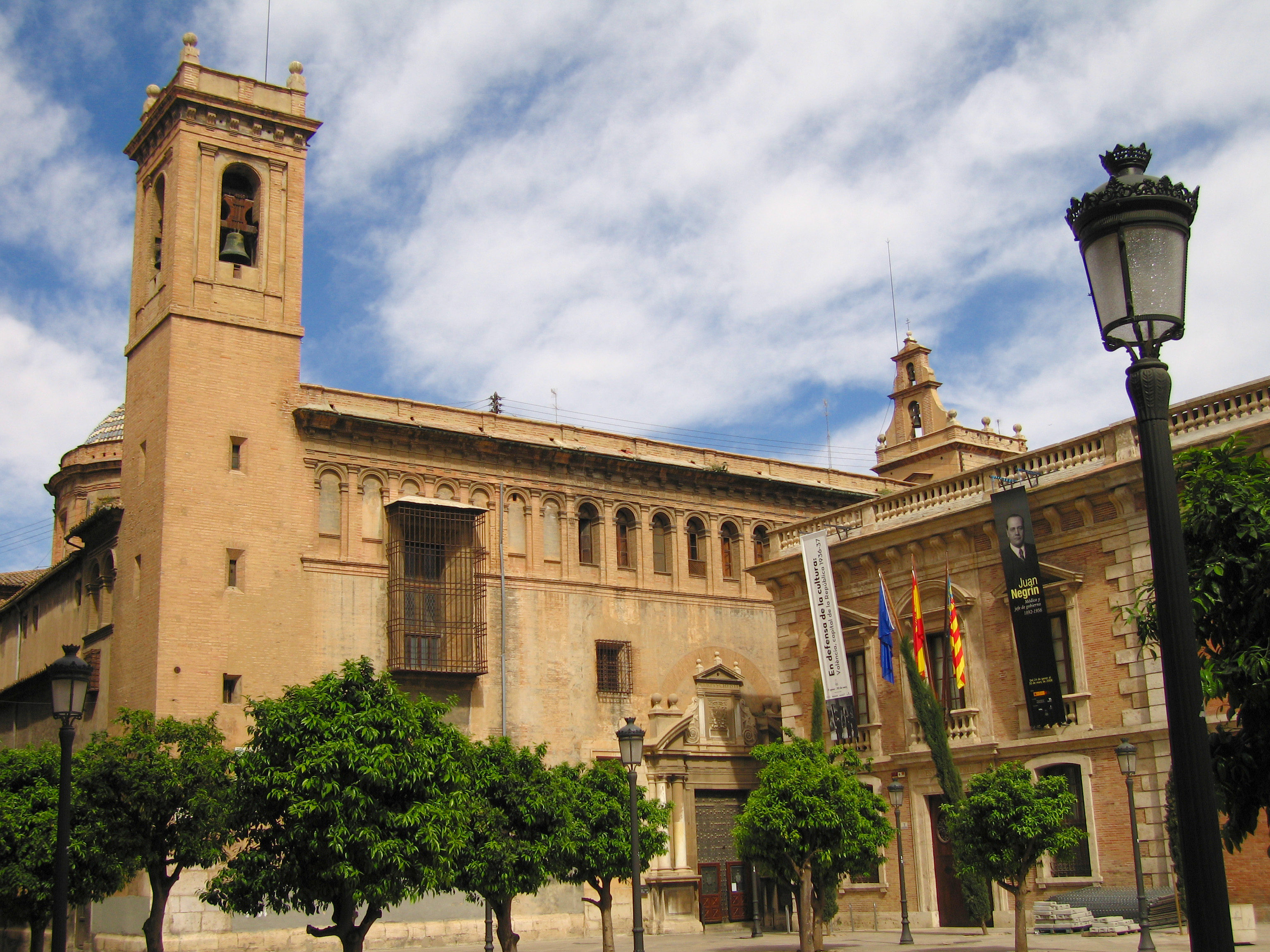Real Colegio Seminario del Corpus Christi on:
[Wikipedia]
[Google]
[Amazon]
 The Real Colegio Seminario del Corpus Christi (Royal College and Seminary of Corpus Christi) is a former Roman Catholic school and seminary founded in 1583 in the Spanish city of
The Real Colegio Seminario del Corpus Christi (Royal College and Seminary of Corpus Christi) is a former Roman Catholic school and seminary founded in 1583 in the Spanish city of
Real Colegio Seminario de Corpus Christi
Buildings and structures in Valencia {{RC-stub
 The Real Colegio Seminario del Corpus Christi (Royal College and Seminary of Corpus Christi) is a former Roman Catholic school and seminary founded in 1583 in the Spanish city of
The Real Colegio Seminario del Corpus Christi (Royal College and Seminary of Corpus Christi) is a former Roman Catholic school and seminary founded in 1583 in the Spanish city of Valencia
Valencia ( va, València) is the capital of the autonomous community of Valencia and the third-most populated municipality in Spain, with 791,413 inhabitants. It is also the capital of the province of the same name. The wider urban area al ...
. It is located in calle de la Nau in the old city, opposite La Nau
La Nau (literally "The Nave") is the former building of the old Universidad Literaria in Valencia, and is today one of the smaller buildings of the modern Universitat de València
The University of Valencia ( ca-valencia, Universitat de Val� ...
, the former Universidad Literaria
La Nau (literally "The Nave") is the former building of the old Universidad Literaria in Valencia, and is today one of the smaller buildings of the modern Universitat de València
The University of Valencia ( ca-valencia, Universitat de Val� ...
.
History
The college complex was built between 1586 and 1615. It is structured around a large renaissance cloister enclosing the church, the communion chapel, the library, the sleeping quarters and the classrooms. There is another courtyard at the back and a small belfry is located in the corner of the plaza. The Patriarch was designated a National Monument in 1962 and a Monument of Cultural Interest in 2007, and remains a principal example of the Italian influence on renaissance architecture in Spain. Part of the building now hosts the Museum of the Patriarch.Daniel Izquierdo Hänni ''DuMont direkt Valencia'' 2011 Page 74 "Museo del Patriarca 11–13.30 Uhr, Eintritt 1,20 € Nur wenige Valencianos – und noch weniger Touristen – wissen, dass sich hinter den hohen Mauern des Seminargebäudes El Patriarca eine kleine, aber bedeutende Pinakothek versteckt. Der Real Colegio Seminario del Corpus Christi wurde zwischen 1586 und 1610 erbaut und diente als königliche Seminarschule." Of special note in the Patriarch Museum are paintings byCaravaggio
Michelangelo Merisi (Michele Angelo Merigi or Amerighi) da Caravaggio, known as simply Caravaggio (, , ; 29 September 1571 – 18 July 1610), was an Italian painter active in Rome for most of his artistic life. During the final four years of h ...
, El Greco
Domḗnikos Theotokópoulos ( el, Δομήνικος Θεοτοκόπουλος ; 1 October 1541 7 April 1614), most widely known as El Greco ("The Greek"), was a Greek painter, sculptor and architect of the Spanish Renaissance. "El ...
, Van Der Teyden, Benlliure, Ribalta and Pinazo, as well as an original manuscript by Sir Thomas More
Sir Thomas More (7 February 1478 – 6 July 1535), venerated in the Catholic Church as Saint Thomas More, was an English lawyer, judge, social philosopher, author, statesman, and noted Renaissance humanist. He also served Henry VIII as Lor ...
.
Archbishop of Valencia Juan de Ribera
Juan de Ribera (Seville, Spain, 20 March 1532 – Valencia, 6 January 1611) was an influential figure in 16th and 17th century Spain. Ribera held appointments as Archbishop and Viceroy of Valencia, Latin Patriarchate of Antioch, Commander in ...
, who founded the institution, arranged housing there for the Franciscan nun, mystic Sr. Margarita Agullona
Margarita Agullona, also called Margarita Agulló or simply Sister Agullona or Beata Agullona ( Xàtiva, Valencia, 1536 - Valencia, 9 December 1600) was a Roman Catholic mystic nun and writer who lived in eastern Spain. She joined the Third Order ...
(1536 - 1600) so he could bear witness to her mystical raptures and for 25 years. When she died, he had her remains moved there. "He ordered in February 1605, that the body of the Venerable, who was incorrupt
Incorruptibility is a Roman Catholic and Eastern Orthodox belief that divine intervention allows some human bodies (specifically saints and beati) to completely or partially avoid the normal process of decomposition after death as a sign of thei ...
, be moved, and arranged that a burning lamp always burned before her sepulcher."
See also
*History of early modern period domes
Domes built in the 16th, 17th, and 18th centuries relied primarily on empirical techniques and oral traditions rather than the architectural treatises of the time, but the study of dome structures changed radically due to developments in mathemati ...
References
External links
Real Colegio Seminario de Corpus Christi
Buildings and structures in Valencia {{RC-stub